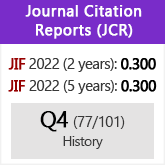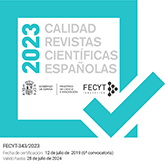Enlivening the dying ruins: history and archaeology of the Jesuit Missions in Ethiopia, 1557–1632
DOI:
https://doi.org/10.3989/chdj.2013.024Keywords:
Jesuits, Architecture, Archaeology, Historical sources, Post-colonialism, EthiopiaAbstract
A summary is presented of the recent archaeological research led by the University Complutense of Madrid on the residences and monuments of the Jesuit missions in Ethiopia, most of them built at the end of the Mission period, between 1621 and 1632. The paper examines the known mission sites in turn, concentrating on the most important ones located in the region of Dembya, north of lake Tana. The emphasis has been put on the contrast between the information available from historical sources, mainly from the Jesuits’ writings and letters, and that obtained in the field, concluding that the differences are limited to the natural tendency to embellishment and self-praise by the missionaries. Finally, the conclusions expose the cultural problems that still exist in Ethiopia to treat this “dark” historical period of the country.
Downloads
References
Anfray, Francis (1980–81) “Vestiges gondariens”. Rassegna di Studi Etiopici¸ 28: 5–22.
Anfray, Francis (1988) “Les monuments gondariens des XVIIe et XVIIIe siècles”. In Proceedings of the Eighth International Conference of Ethiopian Studies, Addis Ababa 1984, edited by Beyene, Taddese, Institute of Ethiopian Studies, Addis Ababa, pp. 9–45.
Angelini, Sandro (2006) Monumenti del Lago Tana (a cura de P. Angelini). Civica Biblioteca A. Mai, Bergamo.
Azevedo, Carlos de (1959) Arte Cristnã na Índia Portuguesa. Junta de Investigações do Ultramar, Lisbon.
Berry, LaVerle L. (2005) “Gondär-style architecture”. In Encyclopedia Aethiopica, vol. II, edited by Uhlig, Siegbert, Harrassowitz Verlag, Wiesbaden, pp. 843–845.
Campbell, Ian (2004) “Portuguese and Indian influences on the architecture of the lake Tana region: An inquiry into the role of Gänätä Iyäsus”. In The Indigenous and the Foreign in Christian Ethiopian Art. On Portuguese-EthiopianContacts in the 16th–17th Centuries. Papers from the Fifth International Conference on the History of Ethiopian Art (Arrábida, 26–30 November 1999), edited by Ramos, Manoel J. and Boavida, Isabel, Ashgate, Ants, pp. 37–47.
Caraman, Philip (1985) The Lost Empire. The Story of the Jesuits in Ethiopia 1555–1634. Sidgwick & Jackson, London.
Chernetsov, Sevir B. (1994) “The role of Catholicism in the history of Ethiopia of the first half of the 17th century”. In Études Éthiopiennes. Actes de la Xe conférence international des études éthiopiennes, Paris, 12–18 août 1988, edited by Lepage, Claude and Delage, Etienne, Société Française pour les études éthiopiennes, Paris, pp. 205–212.
Crummey, Donald (2000) Land and society in the Christian kingdom of Ethiopia, from the thirteenth to the twentieth century. University of Illinois-Addis Ababa University, Urbana-Addis Ababa.
Fernández, Víctor M. (2006) Una arqueología crítica. Ciencia, ética y política en la construcción del pasado. Crítica, Barcelona.
Fernández, Víctor M. (2011) “Schematic Rock Art, Rain-making and Islam in the Ethio-Sudanese Borderlands”. African Archaeological Review, 28(4): 279–300. http://dx.doi.org/10.1007/s10437-011-9101-9
Fernández, Víctor M. (2013) “La materialidad del castigo: una introducción a la arqueología de las prisiones”. In Lugares de represión, paisajes de la memoria. Aspectos materiales y simbólicos de la cárcel de Carabanchel, edited by Ortiz, Carmen, Libros de la Catarata, Madrid, pp. 77–97.
Fernández, Víctor M.; la Torre, Ignacio de; Luque, Luis; González-Ruibal, Alfredo and López, Juan A. (2007) “A Late Stone Age sequence from West Ethiopia. The sites of K’aaba and Bel K’urk’umu (Assosa, Benishangul-Gumuz Regional State)”. Journal of African Archaeology, 5(1): 91–126. http://dx.doi.org/10.3213/1612-1651-10087
Fernández, Víctor M.; Torres, Jorge de; Cañete, Carlos; Martínez d’Àlos-Moner, Andreu; García, M. Luisa; Martín, Eduardo; Dietz, Christian; Abebe Mengistu and Gashaw Belay (2012a) “Arqueología de las misiones jesuitas del siglo XVII en la región del lago Tana (Amhara, Etiopía). Informe preliminar sobre las excavaciones de enero-febrero de 2012 en la misión de Gorgora Nova y la prospección de las misiones de la región de Gojjam”. Informes y Trabajos (Excavaciones en el Exterior), 9: 190–203 (see this and previous reports in http://ipce.mcu.es/difusion/publicaciones/revistas-inf.html) [Accessed 14/October/2013].
Fernández, Víctor M.; Martínez d’Àlos-Moner d’Alòs-Moner, Andreu; Torres, Jorge de and Cañete, Carlos (2012b) “Archaeology of the Jesuit Missions in the lake Tana región: Review of the work in progress”. Aethiopica, 15: 72–91.
González Núñez, Juan (2009) Etiopía: hombres, lugares y mitos (2.ª edición). Editorial Mundo Negro, Madrid.
Henze, Paul B. (2004) “The monastery of Märtula Maryam: Questions and speculations about its architecture and ornamentation”. In The Indigenous and the Foreign in Christian Ethiopian Art. On Portuguese-Ethiopian Contacts in the 16th–17th Centuries. Papers from the Fifth International Conference on the History of Ethiopian Art (Arrábida, 26–30 November 1999), edited by Ramos, Manoel J. and Boavida, Isabel, Ashgate, Ants, pp. 49–58.
Levine, Donald N. (1965) Wax and Gold: Tradition and Innovation in Ethiopian Culture. Chicago University Press, Chicago.
Lüpke, Theodor von (1913) Deutsche Aksum-Expedition. Band III. Profan und Kultbauten Nordabessiniens aus Älterer und Neuerer Zeit. Von Georg Reimer, Berlin.
Martínez d’Àlos-Moner, Andreu (2004) “Paul and the Other: The Portuguese debate on the circumcision of the Ethiopians”. In Ethiopia and the Missions: Historical and Anthropological Insights, edited by Böll, Verena et al., Lit, Mu.nster, pp. 31–51.
Martínez d’Àlos-Moner, Andreu (2005) “Gorgora”, in Encyclopedia Aethiopica, vol. II, edited by Uhlig, Siegbert, Harrassowitz Verlag, Wiesbaden, pp. 853–855.
Martínez d’Àlos-Moner, Andreu (2008) In the company of Iyäsus. The Jesuit Mission in Ethiopia, 1557–1632. Submitted in partial fulfillment of the requirements for the degree of Doctor of Philosophy in the Department of History and Civilization, European University Institute, Florence, Hamburg.
Maryks, Robert A. (2010) The Jesuit Order as a Synagogue of Jews: Jesuits of Jewish Ancestry and Purity-of-Blood Laws in the Early Society of Jesus. Koninklijke Brill, Leiden.
Merid Wolde Aregay (1984) “Society and technology in Ethiopia 1500–1800”. Journal of Ethiopian Studies, 17: 127–147.
Merid Wolde Aregay (1998) “The legacy of Jesuit missionary activities in Ethiopia from 1555 to 1632”, in The missionary factor in Ethiopia, edited by Hayle, Getatchew Lande, Aasuly and Robeson, Samuel, Peter Lang, Frankfurt-an-Main, pp. 31–56.
Monti della Corte, Alexandro A. (1938) I castelli di Gondar. Società Italiana Arti Grafiche, Roma.
Nunes Pereira, António (2005) A Arquitectura Religiosa Cristã de Velha Goa. Segunda metade do séculoXVI – Primeras décadas do século XVII. Fundacão Oriente, Lisboa.
Osswald, Cristina (2013) Written in Stone. Jesuit buildings in Goa and their artistic and architectonic features. Golden Heart Emporium, Goa.
Pankhurst, Richard (1998) The Ethiopians. A History. Blackwell, Oxford.
Pankhurst, Sylvia (1955) Ethiopia. A Cultural History. Lalibela House, Woodford Green, Essex.
Pennec, Hervé (2003) Des jésuites au royaume du Prêtre Jean (Éthiopie). Estratégies, rencontres et tentatives d’implantation, 1495–1633. Centre Culturel Calouste Gulbenkian, Paris.
Pereira, F.M. Esteves (editor), (1892–1900) Chronica de Susenyos, rei de Ethiopia. 2 vols. Imprensa Nacional, Lisbon.
Phillipson, David W. (2009) Ancient Churches of Ethiopia. Fourth-Fourteenth Centuries. Yale University Press, New Haven.
Ranasinghe, Shaalini L.V. (2001) The Castle of Emperor Fasiladas: Missionaries, Muslims, and Architecture in Gondar, Ethiopia. Ph.D. Dissertation. Graduate School of Arts and Sciences, Columbia University, New York.
RASO. Rerum Aethiopicarum Scriptores Occidentales Inediti a saeculo XVI ad XIX, edited by Beccari, Camilo, 15 vols., 1903–1917, Excudebat D. de Luigi, Roma (repr. Brespols, Louvain, 1969).
Reverte, Javier (2001) Dios, el diablo y la aventura. La historia de Pedro Páez, el español que descubrió el Nilo Azul. Plaza y Janéz, Barcelona.
Rodriguez G. de Ceballos, Alfonso (2002) La arquitectura de los jesuitas. Edilupa, Madrid.
Salvo, Mario di (1999) Churches of Ethiopia. The Monastery of Narga Sellase. Skira, Milano.
Tavares Chicó, Mário (1954): “A escultura decorativa e a talha dourada nas igrejas da Índia portugesa”. Bellas Artes (2.ª serie), 7: 23–29.
Vallery-Radot, Jean (1960) Le recueil des plans d’édifices de la Compagnie de Jésus conservé a la Bibliothèque National de Paris. Institutum Historicum S.I., Rome.
Van Donzel, Emeri (2007) “Krestodolu II”. In Encyclopaedia Aethiopica, vol. 3, edited by Uhlig, Siegbert, Harrassowitz Verlag, Wiesbaden, pp. 441–442.
Published
How to Cite
Issue
Section
License
Copyright (c) 2013 Consejo Superior de Investigaciones Científicas (CSIC)

This work is licensed under a Creative Commons Attribution 4.0 International License.
© CSIC. Manuscripts published in both the printed and online versions of this Journal are the property of Consejo Superior de Investigaciones Científicas, and quoting this source is a requirement for any partial or full reproduction.All contents of this electronic edition, except where otherwise noted, are distributed under a “Creative Commons Attribution 4.0 International” (CC BY 4.0) License. You may read here the basic information and the legal text of the license. The indication of the CC BY 4.0 License must be expressly stated in this way when necessary.
Self-archiving in repositories, personal webpages or similar, of any version other than the published by the Editor, is not allowed.

















